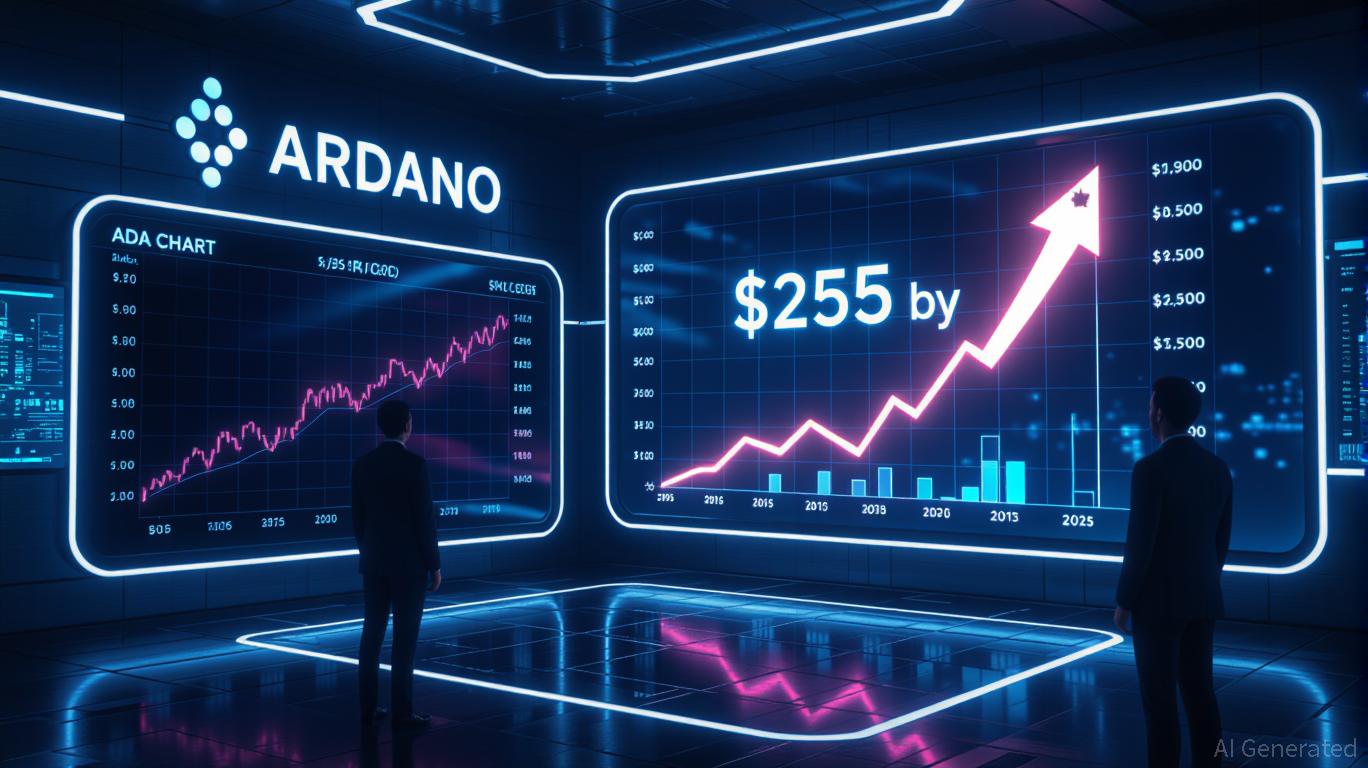AInvest Newsletter
Daily stocks & crypto headlines, free to your inbox
The blockchain space is undergoing a seismic shift as foundational protocols like Cardano (ADA) position themselves at the intersection of artificial intelligence (AI) and institutional finance. Over the past year, Cardano's strategic moves in AI integration, scalability advancements, and enterprise partnerships have created a compelling narrative for long-term investors. Let's dissect why ADA could be a cornerstone of decentralized infrastructure—and why now is the time to consider its potential.

Cardano isn't just another blockchain; it's becoming a platform for AI-native applications. Partnerships like Lightchain AI—a 2025 launch featuring an on-chain Artificial Intelligence Virtual Machine (AIVM)—demonstrate Cardano's ability to execute real-time computations without sacrificing its energy-efficient Ouroboros consensus. Meanwhile, SingularityNET, a decentralized AI marketplace with over 500 live services, has embedded itself into Cardano's ecosystem, enabling developers to monetize AI models transparently. These moves aren't incremental—they're foundational. By 2025, AI-driven dApps are no longer a gimmick but a core competency, attracting enterprise clients like Serviceplan Group's Masumi network.
The thesis here is clear: AI is the next layer of blockchain adoption, and Cardano is among the first to build the infrastructure for it. This isn't just about hype; it's about solving real-world problems. Consider NASA's collaboration with Cardano for space data analysis or FC Barcelona's use of the Reeve Platform (built on ADA) for verifiable financial reporting. These partnerships signal that institutions are ready to trust Cardano's security and scalability for mission-critical tasks.
While Ethereum experiments with Layer 2 solutions and Solana races for speed, Cardano is quietly mastering both. Its BlockDAG architecture, backed by a $339 million institutional presale, promises over 100,000 transactions per second (TPS)—a figure that dwarfs Ethereum's 30,000 TPS and Solana's 65,000 TPS. Layer 2 protocols like Hydra and Midnight have already achieved 100,000 TPS in testnets, while Input Endorsers (launched 2025) cut transaction latency by 30%.
This isn't just about numbers. Scalability determines which blockchains can handle mass adoption. If
processes 1,700 TPS, Cardano's infrastructure is already preparing for a future where blockchain transactions outpace traditional finance. The visual>Cardano's transaction capacity vs. Ethereum and Solana over 2024-2025 would show this gap widening, not narrowing.Institutional capital has always been the missing link for crypto's legitimacy. Cardano is now crossing that threshold:
- Grayscale's Smart Contract Fund allocated 18.5% to ADA in 2025, and its pending SEC filing for a Cardano ETF mirrors Bitcoin's institutionalization path.
- Franklin Templeton launched ADA nodes in 2024, engaging with staking and governance.
- Institutional wallets now hold 5.8% of ADA's supply—double 2024's figure—and the Cardano Foundation's treasury has swelled to $695 million.
This isn't just about money; it's about trust. When Grayscale files for an ETF, it's not gambling—it's calculating. The visual>Grayscale's ADA allocation growth since 2023 would reveal a hockey-stick curve, signaling confidence in ADA's fundamentals.
The technicals are bullish but nuanced. ADA surged 30% in July 2025 to $0.75, breaking a cup-and-handle pattern. Analysts see Fibonacci targets at $1.01 (by year-end) and $1.15, with a multi-year inverse head-and-shoulders pattern pointing to $10–$14. The visual>ADA's weekly RSI and 50/200-day moving averages since 2023 would highlight a golden cross (50-day MA above 200-day MA) and RSI at 68.86—approaching overbought but not yet stretched.
Short-term traders might hesitate at these levels, but long-term investors should focus on the big picture. DeepSeek AI forecasts a $7 price by December 2025, with a 2035 target of $25.89 (40%+ annualized returns). The math here is simple: if ADA captures even a fraction of AI's $15 trillion market cap by 2030, its valuation could explode.
Yet these risks are manageable. Cardano's $695 million treasury and 67% staking participation create a robust safety net. Compare that to Solana's repeated outages, and the choice becomes clearer.
The playbook is straightforward:
1. Entry Point: Buy ADA dips below $0.70 with a stop-loss at $0.65.
2. Short-Term Target: $1.25 by end-2025, with a $2.65 ceiling if everything clicks.
3. Long-Term Horizon: Hold for 5+ years to target $25.89 by 2035.
This isn't a get-rich-quick scheme—it's a bet on the future of decentralized AI. When institutions like Grayscale and governments build on Cardano, they're not just investing in code; they're betting on a protocol that can scale with their ambitions.
Cardano is no longer a “niche altcoin.” Its AI-native architecture, institutional-grade scalability, and enterprise partnerships have set it up as a leader in the blockchain 2.0 era. The next decade will be defined by AI-driven innovation—and Cardano's early moves ensure it's positioned to capture that value. For long-term investors, the question isn't whether ADA can rise to $25 by 2035—it's whether they'll be holding when it does.

Delivering real-time insights and analysis on emerging financial trends and market movements.

Dec.15 2025

Dec.15 2025

Dec.15 2025

Dec.15 2025

Dec.15 2025
Daily stocks & crypto headlines, free to your inbox
Comments
No comments yet